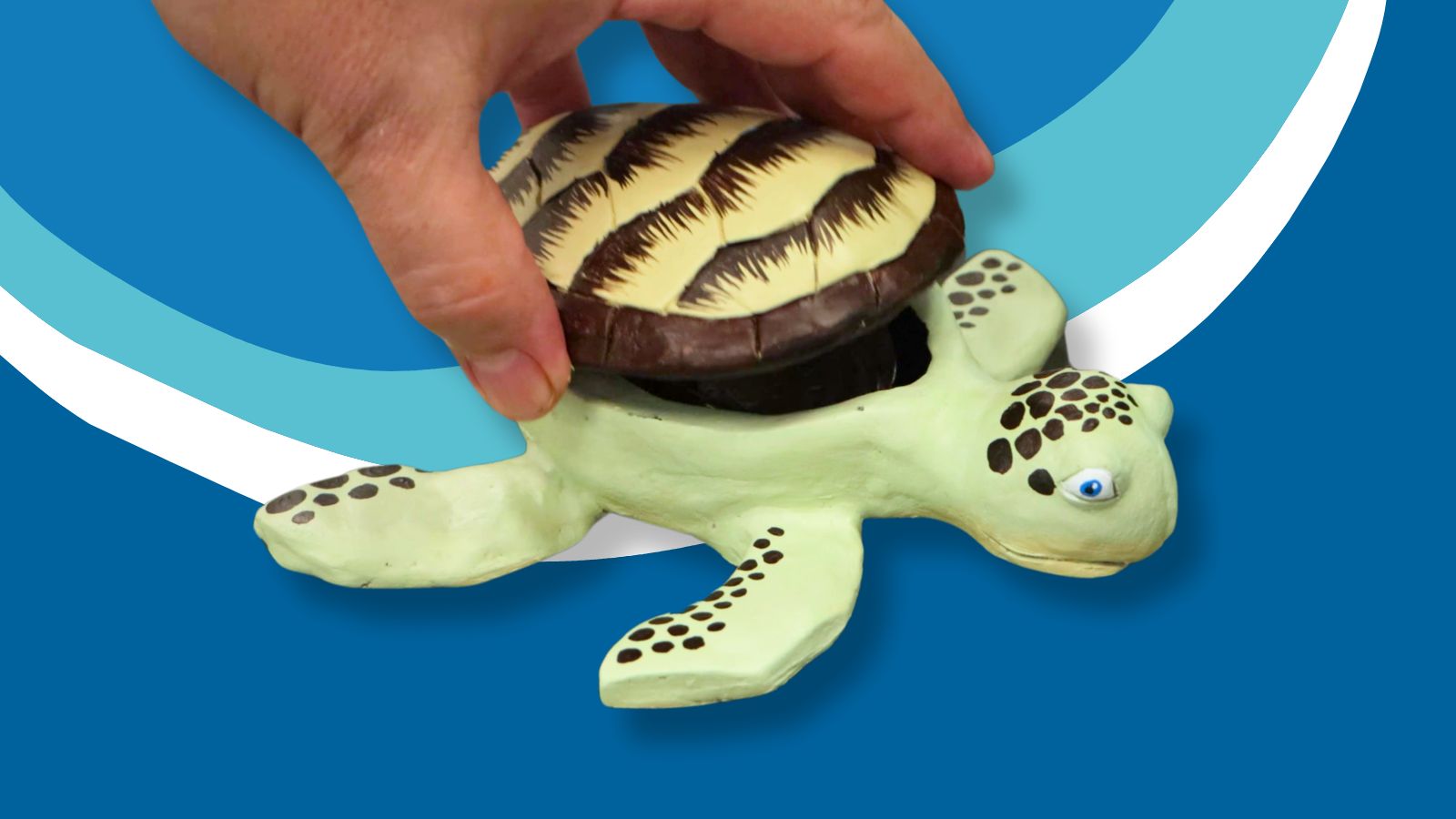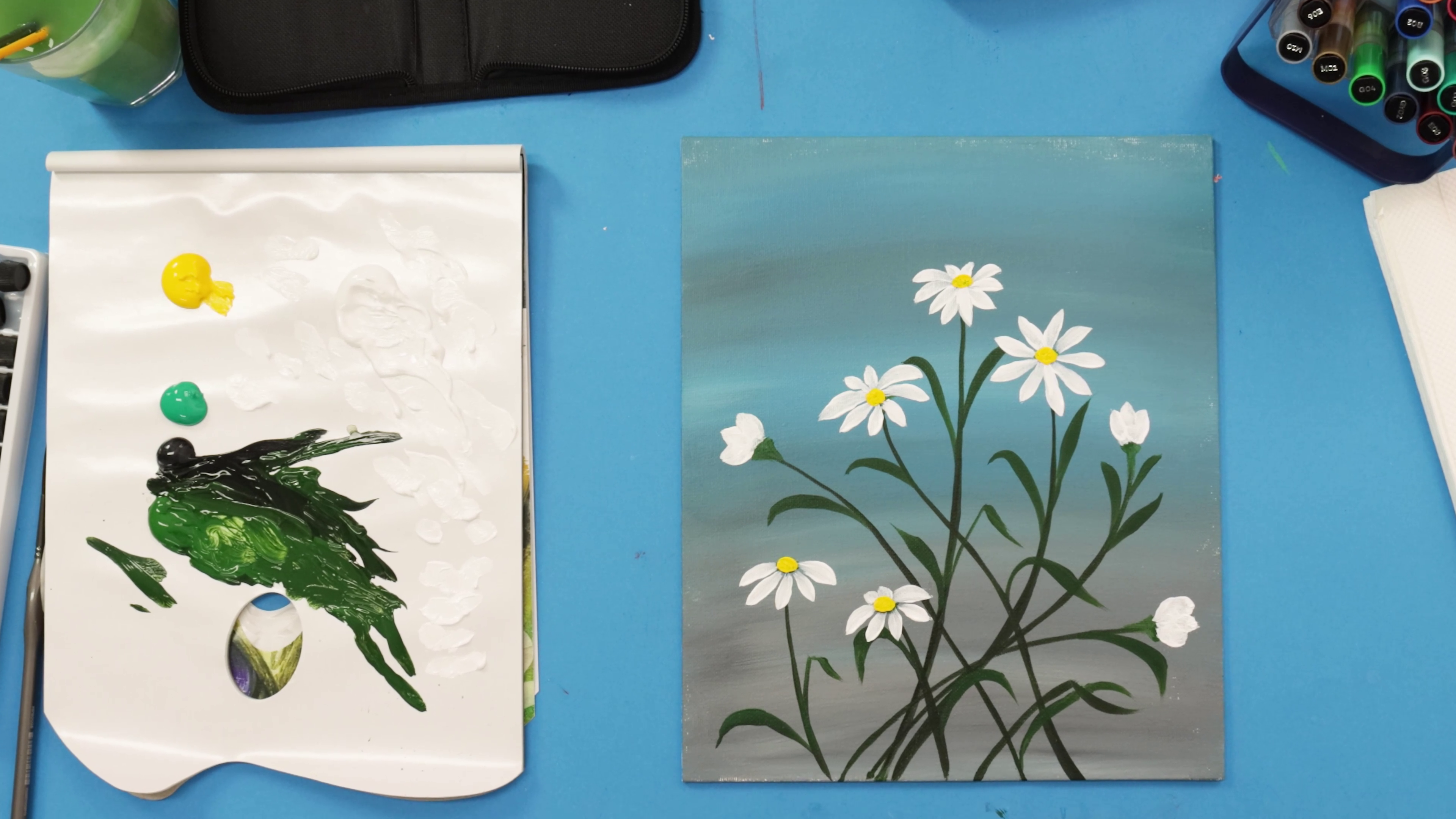Create a rainbow lorikeet bird painting in oils
In this tutorial, Joe guides you through how to create a vibrant rainbow lorikeet oil painting. Learn underpainting techniques with acrylics and oils, along with using moulding paste to add dimension.

Acrylics provide a great base for oil paints as the coat is hard and flexible. It also speeds up the project as you don’t have to wait days for the coat to dry.
Start by creating a sky-blue mix from Phthalo Blue and Chinese White. Separately, mix together Hookers Green, Chinese White and a touch of Lemon Yellow. Also squeeze out some Hookers Green, Lamp Black onto your palette.
Use the large hog bristle flat brush and paint the sky-blue mix into the top portion of the canvas. Blend in the green mix as you work down the canvas, followed by pure Hookers Green, then finally add Lamp Black into the very bottom.
Try to keep the colour at the bottom of the canvas quite dark as vegetation will be painted over the top. This will create a dense look to the forest floor. To make the transitions between colour smooth use quick brush strokes. Allow this coat to dry.

Brush pens are great because the ink is water based. If you happen to make a mistake, you can easily remove it with water and a damp rag. Once you’re happy with how the birdies look you can start adding your paint.

There is a fair amount of yellow on a lorikeet, so block these areas in with Titanium White oil paint. Yellow is a translucent colour and will not opaquely cover an underlying darker tone. Paint pure Phthalo Blue into the head and belly areas. You can then lay Lemon Yellow into the beaks, the front of the tail the and chest area. Finally, add Hookers Green into the tail and wings.

Create a mix from Phthalo Blue, Titanium White and a touch of Lamp Black. Roughly add this to suggest the forest in the distance, bringing the colour about 1/3 of the way down the canvas. Create the distant shapes of the trees and try not to make the coat too consistent. This just adds more interest. You can refer to the downloadable colour guide or video.
Add a touch of white to the mix to lighten it and paint this into the sky area on the top right corner of the canvas.
For the foreground create a dirty yellow/olive tone from Emerald Green, Brilliant Red and Titanium White. Lay this tone around the birds, up to the top side of the branch that the birds will sit on. As you paint closer to the blue area of the forest, blend the yellow/olive tone into the blue so the transition is smooth.
Some soft shapes can be added to suggest the silhouette of vegetation.

Use Hookers green to paint in the first plants. Cycads can be suggested by painting a thin vane with the tip of a filbert brush on its side, then painting in the fronts. To get the shape of the fronts, start with light pressure and then apply more to get a thicker stroke. Finally, release the pressure so the stroke tapers off as you lift the brush gently off the canvas.
Suggest an Elephant Ear plant by creating a new green tone from Hookers Green, Phthalo Blue and Titanium White. Lay the fronds in with broad strokes. Large fronts like this curve over towards the end, paint a darker tone into the underside in the shadow to give it shape and dimension.
Add another large Cycad beside the Elephant Ear. Follow the same process but use olive green so it doesn’t get lost in the background. To get sharp and crisp lines, you can add a little turpentine to adjust the flow of the paint.

1. Beside the Cycad you can add another Elephant Ear plant. Then just work around the forest floor adding fronds and vegetation where ever there is blank area. Tr to get into the habit of standing back an assessing your work.
2. Once the foreground forest floor is finished you can add the olive yellow tone down from the bottom of the branch the birds are perched on. Create silhouettes of more shapes to suggest fronds in the middle ground.
3. Lay the modelling paste on to the blanch with a palette knife. This is an optional step really but it adds an interesting texture on the branch and adds realism.
4. Once you are happy with the background you can lay the top coat on to the lorikeets. Starting by laying Brilliant Red in to the beaks and then the eyes. To create the intricate feathering on the chest area you can start by adding Lemon Yellow into the whole area. Into this yellow, you add Brilliant Red with the small filbert. Build the tone up slowly allowing the orange to be created and lay a small amount of red over the coat. Fade the colour out on the edge of the bird’s chest.
5. Rainbow lorikeets have light pin feathers emitting from the front of the face that go around the eye and down the head in a specific pattern. To suggest this, create a mix from Titanium White with a touch of Phthalo Blue. Apply these strokes with the finest brush you have, keeping the pattern in mind. Paint black around the eye and finish it off with a dot of Titanium White.
6. Add small areas of green and red in to the wings and legs. The belly can then be painted in Phthalo Blue with white gently blended in to the left side so it transitions into the Phthalo on the right, giving it a roundish shape.
7. The tail can be glazed with yellow. For the base of the tail, apply yellow tinted with a touch of green. More green can be added over any green areas in the wings. At this stage you can also add bits of red, yellow and blue over the wings and legs. The feet can then be painted in with a warm grey.
8. You can then move on to the next Lorikeet. The colours will be the same but where he is situated will be different.
9. Now that the beautiful birdies are done you can turn your attention to the branch. Lay some Lamp Black thinly onto the lower area of the branch with the large filbert on its side. Next, lay a thin coat of Burnt Umber into the top portion of the branch and blend it into the Lamp Black so there is a smooth transition.

To create the highlights, mix some Titanium White with a touch of Burnt Umber and lay this over the top of the branch. The trick with this is to use the flat part of the brush and very lightly drag it over the surface. And wallah!
Material List
- Traditional Wood Palette Signature 30 x 38cm (11.8 x 14.9in)
- Single Thick Canvas Signature 50 x 60cm (19.7 x 23.6in)
- Brush Wallet Set Premium 15pce
- Oil Paint Premium 75ml (2.5 US fl.oz) Tube - Permanent Green
- Oil Paint Intro Set Premium 8pc x 18ml (0.6oz)
- Satin Acrylic Paint Premium 75ml (2.5 US fl.oz) Tube - Chinese White
- Satin Acrylic Paint Premium 75ml (2.5 US fl.oz) Tube - Phthalo Blue
- Satin Acrylic Paint Premium 75ml (2.5 US fl.oz) Tube - Lamp Black
- Premium Modelling Paste Tub 500ml (16.9oz)




































